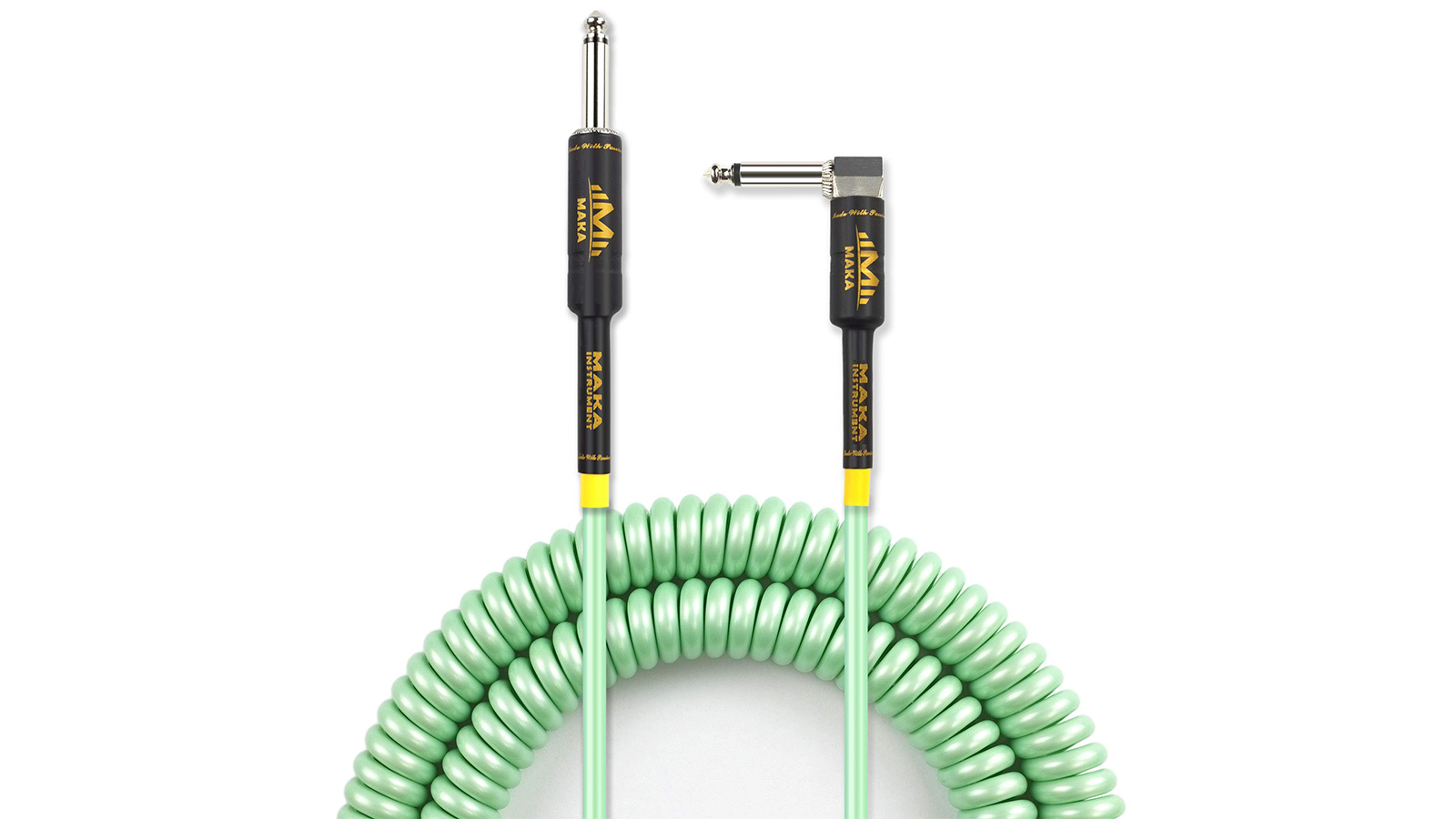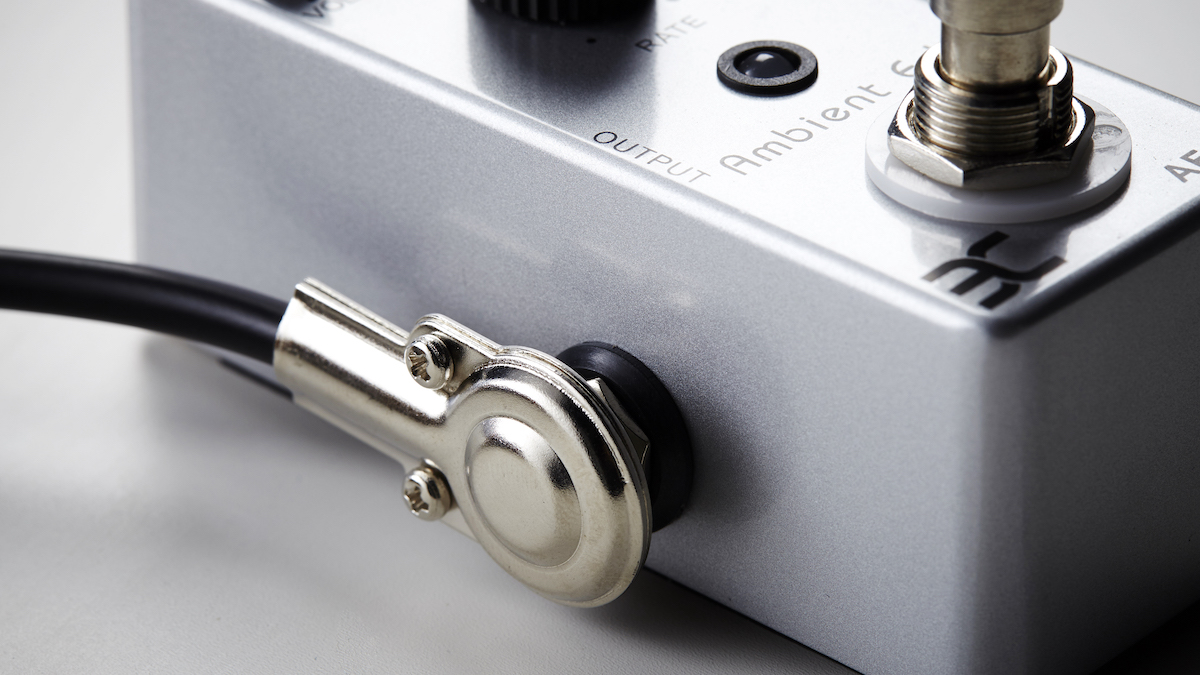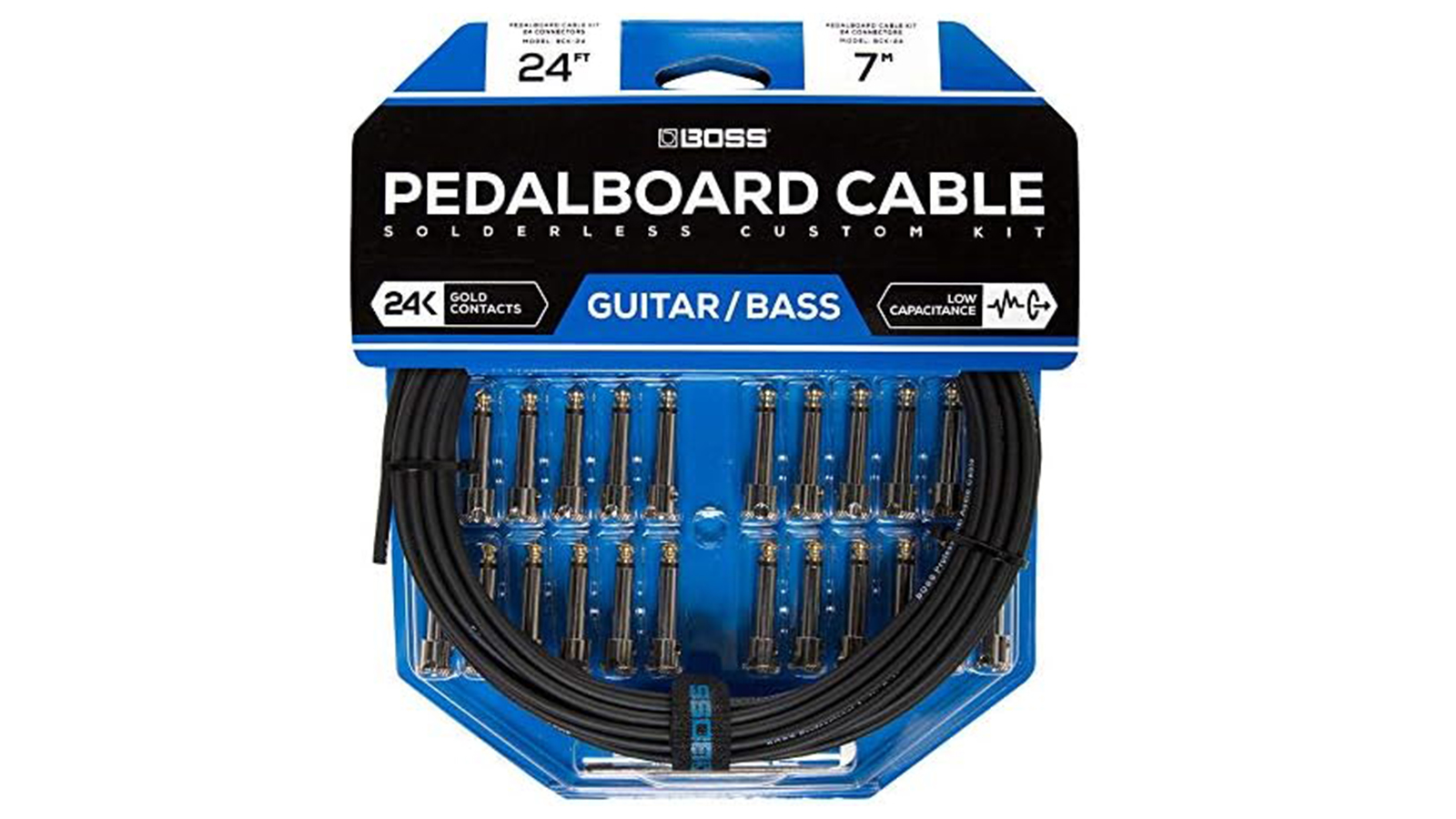How to choose the right guitar cable: from length and connector considerations, to whether you should build your own, here’s everything you need to know
We've played enough bad cables to know what we're talking about – now you can plug and play with confidence using our guide

Let’s be honest, choosing the right guitar cable is probably the most boring part of putting together your rig. Just grab the first one you see, maybe pick a cool color, and get playing, right? Well, hold fire! While a cable might not be the most interesting part of your set-up, it’s arguably the most crucial. No cable, no amplified sound; so it's important to consider which one is right for your needs.
If you’ve never considered which cable is best, you’re not alone – even veteran guitarists may never have taken time to mull over what makes a cable good or bad for them. But with this guide we can help you make a confident choice.
What does a guitar cable do?
You can trust Guitar World
Firstly, it is worth touching on what specifically a guitar cable – often referred to as a jack cable – does. Fortunately, it’s pretty simple. A guitar cable carries the electrical signal generated by your guitar's pickups to an amplifier or your audio equipment of preference. That’s it. This differs from other kinds of cables that you may find in a stage or studio environment that carry other things aside from electrical signals – for example an XLR (microphone cable) can also carry power.
We go into more detail on how guitar cables work in this explainer feature.

Style
In terms of the appearance of guitar cables, they tend to follow pretty much the same general design, barring the odd wild color – which, unfortunately, doesn't translate to a miraculously better tone, so go with whichever color suits you best!
That’s because a standard cable, composed of a conductive metal core wrapped in an outer jacket, is at its most effective when it’s a flexible, straight cable – hence why the vast majority of them look the same. There isn’t much room to improve the appearance of a cable without hindering its ability to effectively do its job.
One notorious outlier in appearance is the coiled cable. Coiled cables look cool, but they have drawbacks: owners will agree they take up additional space and never quite fall as you want them to. More importantly, they have higher capacitance due to their longer length (if they were stretched all the way out). Higher capacitance means your guitar’s signal loses some characteristics, notably the high end, making your tone sound more dull. That said, this is usually barely noticeable, so if you love the look, then go for it.
Length
Length is important to factor in when buying a cable. If you’re playing live, are you more of a shoegazing type who will happily stay planted in one spot? Or are you more of an Angus Young type who likes to make the absolute most of the stage?
There’s nothing more embarrassing than trying to strut your way around the stage, then yanking your lead out of your amplifier and noticing you can no longer hear yourself; rest assured, everybody else noticed it too. Make sure you get a lead that is long enough for your preferred level of stage movement, though do bear in mind that a longer lead will mean a larger price tag and the same capacitance issue we covered with the coiled cable. Alternatively, consider a wireless set-up that gives you total freedom of the stage.
Perhaps you’ve just got hold of your first couple of pedals and now need to connect them up? You could do this with a standard 10ft-long guitar cable, but that will leave a lot of unnecessary cable between each pedal. To avoid this, pedals will typically be joined by patch cables. These will be optimized for pedals by being much shorter –typically only around 6-inches – and feature right-angle connectors to minimize the amount of space taken up by cables on a pedalboard, allowing you to get pedals much closer to each other.

Connectors
Some standard cables may also feature angled connectors – for guitars such as a Gibson Les Paul, which feature their jack input on the bottom, this is a handy addition that keeps you from banging the cable and risking snapping the end off; however this wouldn’t be as suitable for a Stratocaster, which features the jack input on the front and at an angle, which is designed to work best with a standard, straight jack.
Cable durability
Cables have a habit of dying at exactly the wrong moment. Cheaper cables will typically be made of affordable materials, and their components (e.g. connectors) will be both poorer quality and have been soldered weakly, meaning the connections may not last as long, particularly if they’re subject to wear and tear. Fortunately, as cheap cables can come in at only a few dollars each, they’re not too painful to replace; however, it may be an idea to buy multiple cables at once, giving yourself an insurance policy if one of them breaks down.
Alternatively, premium cables will typically be more durable, being made from higher quality components and with more care taken in the manufacturing process, so they should last longer and wear much better. Many cables now come with warranties, which cover you if they break – though this will not include any excessive damage if you don’t look after them. You will also likely need to keep track of your original purchase receipt, so don’t lose it!
Other features to look out for
It’s always worth looking for a shielded cable, which will have a material that stops electrical interference from the outside world being picked up by the conductive part of your cable, which can produce hum. If you consider that a typical stage will have multiple amplifiers, pedalboards, powered microphones and a PA system, there are a lot of different electrical signals going on which typically don’t play nicely with your guitar’s own. Shielding can only do so much to stop noise/hum entering your circuit – your guitar itself will be the biggest culprit of opening the door to noise – but every little helps and the best cables will have excellent shielding.
Some cables have additional features, such as circuit breaker switches, that mean you can silently unplug and switch instruments – we’ve all been there, unplugging your guitar while it’s still plugged into the amp and faced with a big ‘pop’; this switch avoids that. This is something to consider if you make a lot of instrument changes during a set.
99 percent of guitars will use standard jack cables, but there are odd occasions where a specific cable needs to be used; for example if the guitar needs to transmit additional data aside from just an electrical signal from the pickups.
Where using different cables is becoming more common, however, is with effects pedals. Some pedals feature stereo input and output, which may come in the shape of two standard mono jacks for the left and right signals coming out of the pedal, or one single stereo jack or TRS cable – this is the case on the MXR M300 reverb pedal.
These cables are easy to find, and much more common to use for stereo instruments such as keyboards, but it’s something to consider if you want to make use of the stereo capabilities of your pedals.

Should you build your own cables?
If you have a penchant for DIY, then perhaps buying a ready-made cable isn’t for you. Why not build your own? There are even a number of manufacturers who will package up the equipment for you to do this, and you don’t necessarily need a soldering iron either, as some offer solderless cable kits.
Typically, players would lean towards building their own cables if they needed a specific length, for example when building a pedalboard and there's a requirement for a patch cable of a certain length. Whilst patch cables come in many lengths, nothing satisfies the neat-freak more than having a cable that fits perfectly between your pedals. Building your own cable also gives valuable insight into how cables are built and how to fix them when they break.
Conclusion
Most guitar cables will do a job for you, regardless of which specific one you go for. If you’re keen to get going as quickly and cost-effectively as possible, budget own-brand cables may be ideal, but these likely won’t deliver the durability of more expensive cables, so it may be worth making a larger initial investment to save money down the line.
Above all, always make sure you buy the right cable for the right job – for example the often unheralded little patch cable is a crucial component in building the tonal kingdom at your feet and should be given as much thought as your primary instrument cable. They may not be exciting, but every guitar cable in your circuit should be given the consideration and investment it deserves.
All the latest guitar news, interviews, lessons, reviews, deals and more, direct to your inbox!
Connor is a contributor to Guitar World and MusicRadar. Having been a guitarist since the age of 10, he's played bass and guitar in bands across the South West of England. He has a background in audio engineering, having worked in some of the UK’s best studios including Rockfield and Invada, and has a passion for recording guitar. He is always keen to discover the greatest gear for capturing tone, be that microphones, audio interfaces or cab simulators.

